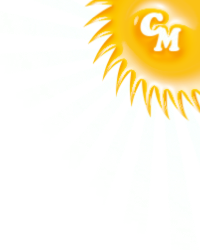IMPORTANT
We strive to learn the 50 sight words or high frequency words through our "Imagine It" literacy curriculum. The goal is to read each word within 3 seconds. Research shows that when we have to stop and decode / sound out / make sense of a word, we lose comprehension and reading fluency. We also work hard on writing /spelling each sight word correctly. 
- OVERVIEWBig Books
Books encourage young students to interact with fine literature, explore concepts of book and print awareness, expand vocabulary knowledge, and develop comprehension.
Decodables
Pre-Decodable Stories help students learn about concepts of books and print and practice reading essential high-frequency sight words. Decodable stories provide fluency practice through phonetically controlled, connected text.
Phonemic Awareness and Phonics instruction
Phonemic awareness and phonics instruction and review play a crucial role in SRA Imagine It!. Components include alphabet and phonics cards, game mats, write-on/wipe-off boards with magnetic uppercase and lowercase letters, and other items/activities to support instruction.
Benchmark Assessments
Benchmark Assessments monitor student progress across the school year and serve as a predictor of success on state and other high-stakes tests. In Kindergarten, tests are administered at the beginning of the year and then at the end of every other unit.WRITING
For the first year of school, we focus on sound manipulation (identifying initial, middle and final sounds), rhyming, decoding, learning letters, letter sounds, blends (orally blending 2-3 phonemes in a one syllable word), consonants vs. vowels, conventions of writing (proper letter formation, proper spacing between words, punctuation), how to read and write VC (vowel/consonant), CVC (consonant/vowel/consonant) and more difficult words such as CVCC (ex: went), CCVC (ex: plum), CCVCC (ex: plant) words (based on your child's individual skill level), sight words, comprehension, etc.
In Kindergarten, phonetic spelling of difficult words is developmentally appropriate and should be fully supported by families. We are starting by using drawings and dictating our stories. As the year progresses, we are going to start labeling one item/object at a time, move on to first writing short and then more complex sentences. This is a very important time in your child’s development. PLEASE be patient and supportive of your child’s learning.
READING
Reading is essential in everything that we do in our classroom!
One of our main focuses during our first year of school is on phonemic awareness and phonics.
As we are learning our letters and letter sounds, we will start using our knowledge and read VC words (vowel/consonant: it, on, is), CVC words (consonant/vowel/consonant: cat, mat, pan, rug),CCVC, CVCC, CCVCC (based on your child's individual skill level) and sight words. Each week we are learning new sight words introduced by our Literacy curriculum for a total of 50 sight words throughout the year. These sight words are used daily in our Guided Reading and Writing, independent reading, through decodables, journaling and various learning activities.
By reading at home each day and by being read to each day, your child makes connections and better understands contexts and how to read.
At school, we are engaged in read-alouds, guided reading, independent reading, shared reading, etc. Your children are exposed to a variety of books including fiction and non-fiction.
Your child learns primarily from you and your attitude towards reading. The more excited and eager to read you are, the better reader your child will become!!!PLEASE read to your child daily and engage your child in reading and writing whenever possible. For example: when you are cooking (read labels, sound out the letters); while driving read street/business signs; play word games; use literacy songs; sound out CVC words and invite your child to guess the word; clap syllables in a word/ name; write letters to friends, family members; write letters in sand/shaving cream/pudding (for a messy BUT fun way to write); cut letters/words out of magazines; highlight words in magazines and newspapers; make word collages; write wish lists; make lists of things to do or places to go; etc.
Most of all, have fun reading and writing!
We are working together and building a solid knowledge foundation for your child! - CURRICULUM/STANDARDS(View the newly adopted Alaska Kindergarten Literacy Standards here. )
KINDERGARTEN LITERACY CURRICULUM
GOALS
Thegoals include but are not limited to teaching students to:
• Identify and manipulate the sounds of language
• Learn how the alphabet works
• Explore concepts in Science and Social Studies
• Be successful at early reading and writing experiences
• Understand the joy learning brings into our lives
Through K, we focus on:
• Phonological and phonemic awareness
• Alphabetic knowledge
• Print and book awareness
• Comprehension skills and strategies
• Writing, grammar, usage, mechanics, and storycrafting
• Language development
• Vocabulary
